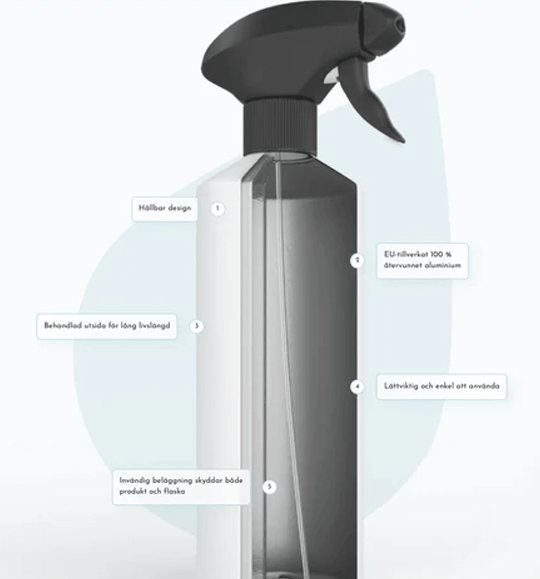Aluminium, A solution for the future

Aluminum, a metal element well known for its lightness and corrosion resistance, plays a central role in the manufacturing industry. Its properties make it an ideal material for a variety of applications, from automotive parts to packaging materials. But it's not just aluminum's versatility that makes it appealing. Aluminum can be recycled without losing its original properties, making it an excellent choice for those who want to contribute to a more sustainable future. In Sweden, we are very good at storing cans, and recycling a large part of our aluminum packaging.
Aluminum and circular economy
A circular economy is about creating an economy where materials and resources are recycled and reused instead of being discarded. Aluminum has a central role in this process.
Currently, more than half of all aluminum used in production is recycled. But the potential to increase this figure is great. With the right processes and techniques, aluminum can be remelted and reused efficiently, reducing both waste and the need for new raw materials.
Aluminum Stewardship Initiative
To ensure that aluminum production takes place in a sustainable manner, the Aluminum Stewardship Initiative (ASI) has been introduced. ASI is a global, multi-stakeholder initiative that aims to maximize aluminum's contribution to a sustainable world.
ASI certification means that a facility meets a series of sustainability criteria and that it works to constantly improve its methods and processes.
Why recycle aluminium?
Aluminum recycling has many advantages. First, it reduces the need for bauxite, a raw material used to make aluminum. Second, it reduces carbon dioxide emissions. By recycling 1 tonne of aluminium, you can save 6 tonnes of bauxite and 9 tonnes of carbon dioxide emissions. Globally, aluminum recycling saves more than 100 million tons of carbon dioxide each year.
Design for recycling
To increase the proportion of recycled aluminium, it is important to design products with recycling in mind. This may mean choosing to use aluminum instead of other materials, and designing products in a way that makes them easy to recycle.
QLEANTAB and aluminum recycling
QLEANTAB has chosen to use recyclable aluminum in its bottles. They are manufactured in Europe and offered with a 25-year warranty. This is an excellent example of how companies can contribute to a circular economy by choosing to use recyclable materials.
Aluminum compared to plastic
Compared to plastic, aluminum has several advantages. First, it is more sustainable. Plastic breaks down very slowly and can create major environmental problems. In addition, plastic cannot be recycled in the same way as aluminum.
Summary
Aluminum recycling is a powerful solution for creating a more sustainable future. By choosing to use aluminum instead of other materials, companies can help reduce waste and reduce the need for new raw materials. With the right design and production processes, aluminum recycling can become even more efficient, opening up even greater environmental gains.
A quoted statement highlighting the importance of aluminum recycling :
"Times are changing and sustainability is becoming the most important decision-making basis when purchasing. Today, our customers are more concerned about the environmental impact of production than they are about costs, which used to be the case," says Sacha Brandt.
